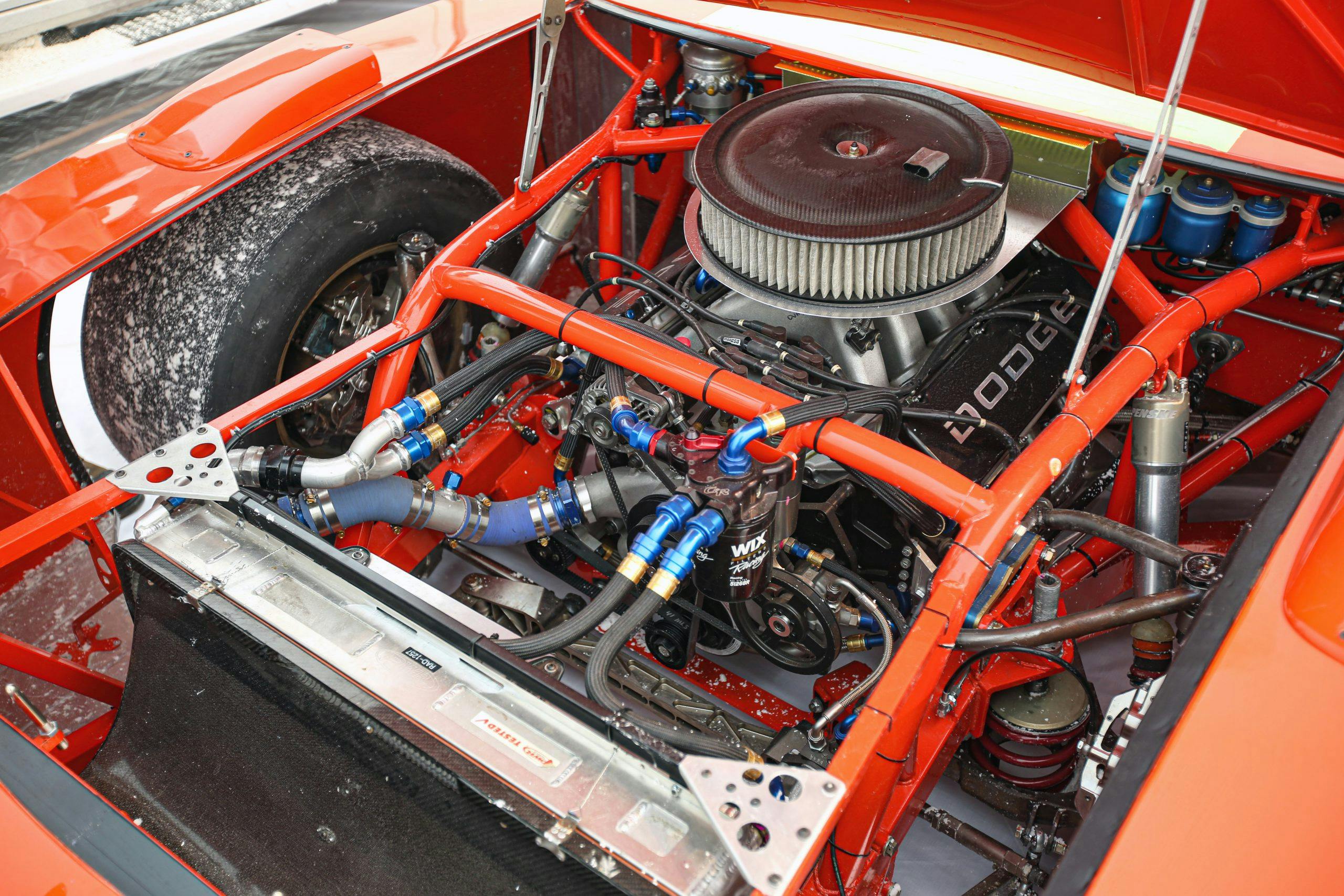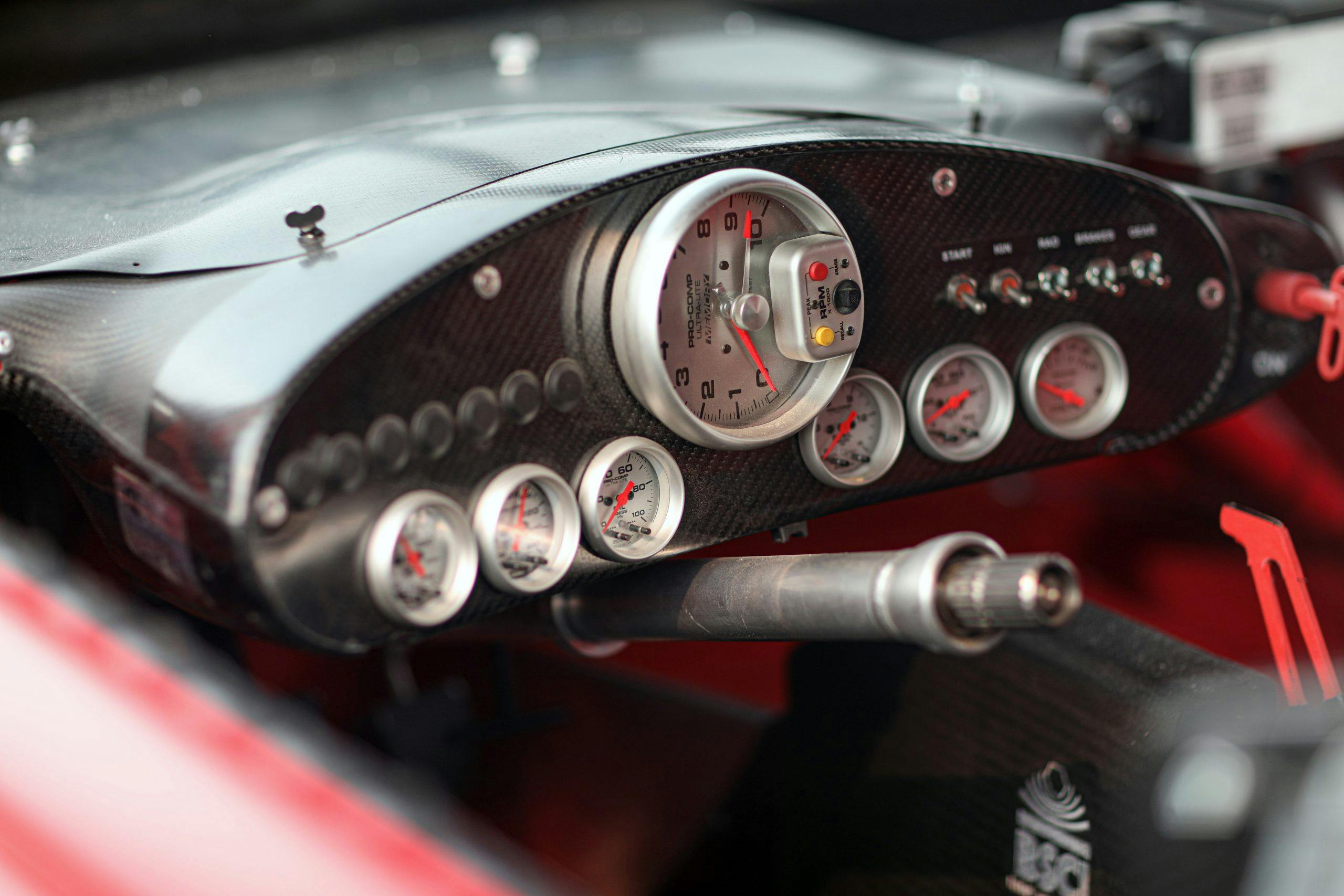These two NASCAR aero warriors are built to tame the Bonneville salt
You can expect to see all sorts of strange creations ply the salt at Bonneville Speed Week. Sleek streamliners staged next to ’32 Ford roadsters and funky ’50s Studebakers are parked alongside Firebirds with homemade air dams. What you don’t really expect is a pair of classic NASCAR racers sitting on the salt, as if they’d taken a wrong turn on the way to Talladega. We spoke to Aaron Brown of The Garage Shop in Catawba, North Carolina, to discover just how these two cars came to be.

Brown spent years working for NASCAR teams as an engineer developing race cars for Dale Earnhardt Incorporated (DEI) and Evernham Motorsports. It was during his tenure with Evernham in 2007 that Brown got his first taste of the Bonneville Salt Flats. Evernham and his team brought a NASCAR Cup car to run on the salt as an homage to Bobby Isaac’s 1971 speed runs in the K&K Insurance Daytona. The 2007 car ran 244 mph and sparked a bit of land-speed racing fever in Brown. While he turned his attention to restoring some vintage NASCAR racers, and opening up his own place—The Garage Shop in Catawba, North Carolina—the itch to go racing lingered.

While spectating at Speed Week, Brown met Vance Kershner, a collector and racer who is serious about going fast. Kershner asked Brown what his dream Bonneville build would be and Brown immediately went to the original K&K Insurance car that Bobby Isaac drove on the salt in 1971. “I grew up beside Bobby Isaac’s family. We wanted to pay tribute,” Brown says. Kershner thought about that concept for a few months and at SEMA the two met up again and agreed to partner on a build that would see a winged Charger back on the salt 50 years later.

The entire crew at The Garage Shop was involved in building the Charger, which was quite a task, as they didn’t start with a Charger. The crew first built a tube chassis that’s almost exactly what you’d find under the skin of a modern NASCAR Cup racer, but with a stretched wheelbase to fit the classic Charger’s lines. Then the team used AMD reproduction sheetmetal to replicate the vintage Coke-bottle lines, tweaking things here and there to cheat the aerodynamics a bit.
“We tried to keep the factory lines of the car, but utilize the technology of today. We didn’t do anything they weren’t doing back then, we just refined it,” says Brown. Perhaps this is what Isaac and his team would have done in 1971 if they could have gotten away with it. The Garage Shop team built the rocker panels and the rear window plug that eliminated the tunneled rear window common on all Chargers save for the Daytonas and 500. For the iconic nose and wing, the team turned to Grant Janak, who specializes in reproducing the Dodge aero bits.

As the Charger progressed and the team solved all the problems of adapting a modern NASCAR chassis design to a classic car’s proportions, Brown realized that what they really needed was competition. Dodge’s winged Daytona and Plymouth Super Bird weren’t born in a vacuum; they were a response to Ford’s stretched and streamlined Torino Talladega. Using a similar chassis, this time powered by a Ford NASCAR FR9 engine, the team applied the same skills they’d use to create the Charger to build a Torino.

Unlike the Charger, the Torino was built using vintage sheetmetal, starting with a stalled Torino Talladega restoration project. This project required quite a bit of bodywork as well as new quarter-panels from AMD. Note that front end: Unlike a typical Torino Talladega that used a mildly dropped nose to create a more wind-cheating shape, the team at The Garage Shop restyled the nose of this Torino to mimic the Daytona a bit more.
The metal massaging paid off, as the Brown was able to push the car to 217.986 mph at Bonneville, narrowly eclipsing the 211.595 mph that Kershner managed while behind the wheel of the Charger Daytona. “That’s pretty amazing that a rookie driver was able to do that,” Brown adds, while noting that driving on the salt is always a challenge, even when the conditions were as close to ideal as they’ve been in years. Both Kershner and Brown spun on the Bonneville salt, but both cars came away without any serious damage.
“That was kinda my fault,” Brown admits, sharing how he tried to avoid a soft spot on the salt that had disturbed the Daytona on a previous run. Things went differently when Brown ran the same course in the Torino. “I slid for three-quarters of a mile.” Part-way through the slide, Brown went backward through the timing lights at the three-mile mark at 201 mph.

In 1971 Bobby Isaac set 28 land-speed records in his NASCAR Charger Daytona. While the two teams campaigning the cars for The Garage Shop were able to eclipse 200 mph on the salt, they didn’t come away with any records. Both cars were running time-only, meaning they were tech-inspected for safety and could collect a time slip but they were not entered in any class to compete for a record. For their first time on the salt, each car did quite well. Beyond that, the teams accomplished their goals. “We did this whole thing to honor Bobby and all of those guys back in the ’70s.” Brown says. “If we’d gone 230 or 240 [mph], that’s not honoring them, especially on the 50th anniversary. My personal goal was to match them.” Next year, however, the team may go after higher speeds.
There are plans for at least two more land-speed race cars that are being built at The Garage Shop, including a streamliner that has already seen 400 mph on the salt with its previous owner—but what’s in store for these two aero warriors? Brown told us that there’s more in the cars thanks to the modern chassis and contemporary, powerful V-8 engines. Now that they’ve paid tribute to Isaac on the 50th anniversary of his record-setting 1971 trip to the salt, the gloves can come off. As for the streamliner, we asked who’s going to get behind the wheel for its high-speed runs. Will it be Brown or Kershner? Brown says, “We don’t know yet, we’re accepting applications.”













